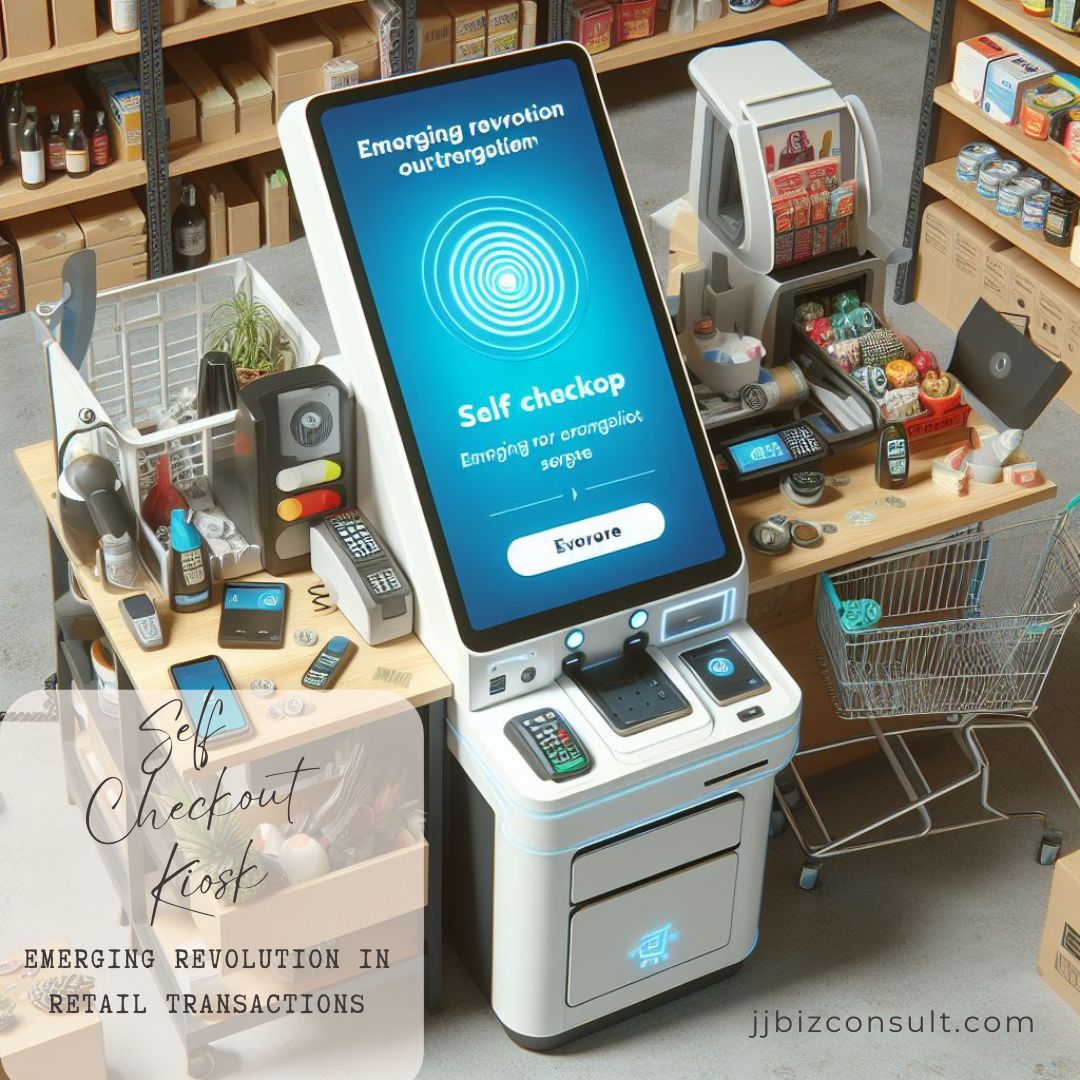
Self Checkout Kiosk: Emerging Revolution in Retail Transactions
Self Checkout Kiosk In the ever-evolving retail landscape.
Introduction: Self Checkout Kiosk
In the ever-evolving retail landscape, self-checkout kiosks have emerged as a game-changer. These automated machines allow customers to scan and pay for their purchases without the need for human cashiers. While opinions about self-checkout kiosks vary, one thing is clear: they are here to stay. In this blog post, we’ll explore the benefits, challenges, and future prospects of self-checkout technology.
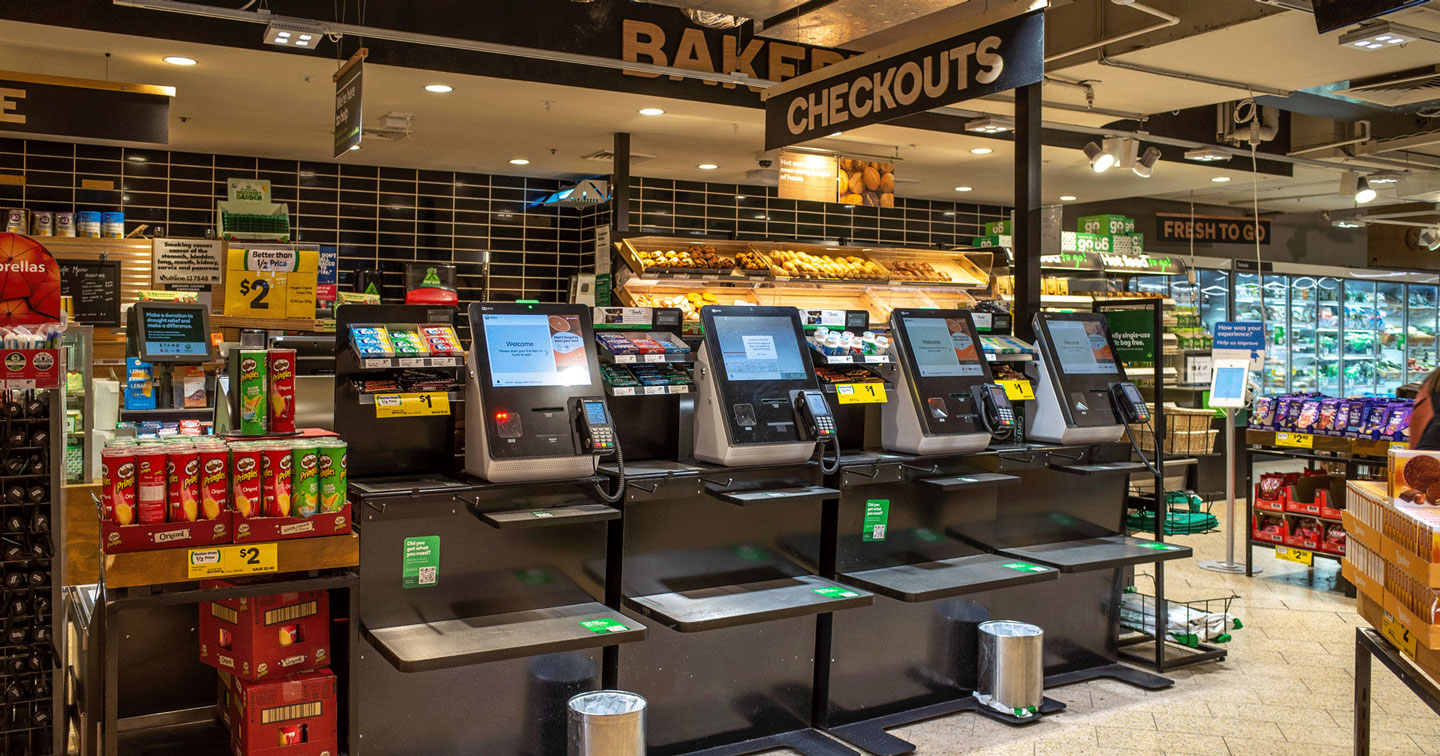
The Love-Hate Relationship
Customers’ Perspective
Customers have a love-hate relationship with self-checkout kiosk. On one hand, they appreciate the convenience and speed of these machines. No more waiting in long cashier lines—just scan, pay, and go. Plus, self-checkout provides a sense of control over the transaction process. However, glitches, confusing interfaces, and occasional theft accusations have left some customers frustrated.
Executives’ Dilemma
Corporate executives face a conundrum. Dollar General’s recent decision to remove self-checkout kiosks due to theft concerns highlights the challenges. An AI flagged suspicious behavior, leading to the removal of these machines. On the other hand, Target’s introduction of express lanes for self-checkout aims to address long wait times. The question remains: Are self-checkout kiosks a boon or a bane?
Self Checkout Kiosk: The Trust Factor
Trust plays a pivotal role. Some retailers believe customers will embrace self-checkout willingly, while others remain skeptical. Ross Stores’ pilot program and Kohl’s expansion plans indicate confidence in this technology. But what about the retailers who lease space in shopping centers? Are they grappling with self-checkout issues?
The Changing Landscape
Waning Craze?
The self-checkout craze may be losing its initial fervor. ScanSource’s CEO acknowledges a shift in customer sentiment toward this technology. Yet, Axios reports that 43% of U.S. consumers prefer self-checkout over traditional cashier lanes. So, what lies ahead?
Balancing Tradition and Innovation
Retailers face a delicate balancing act. While self-checkout streamlines operations and reduces labor costs, it also impacts the human touch. Impulse purchases decrease when customers bypass cashiers. However, the allure of efficiency persists.
How does self checkout kiosk work?
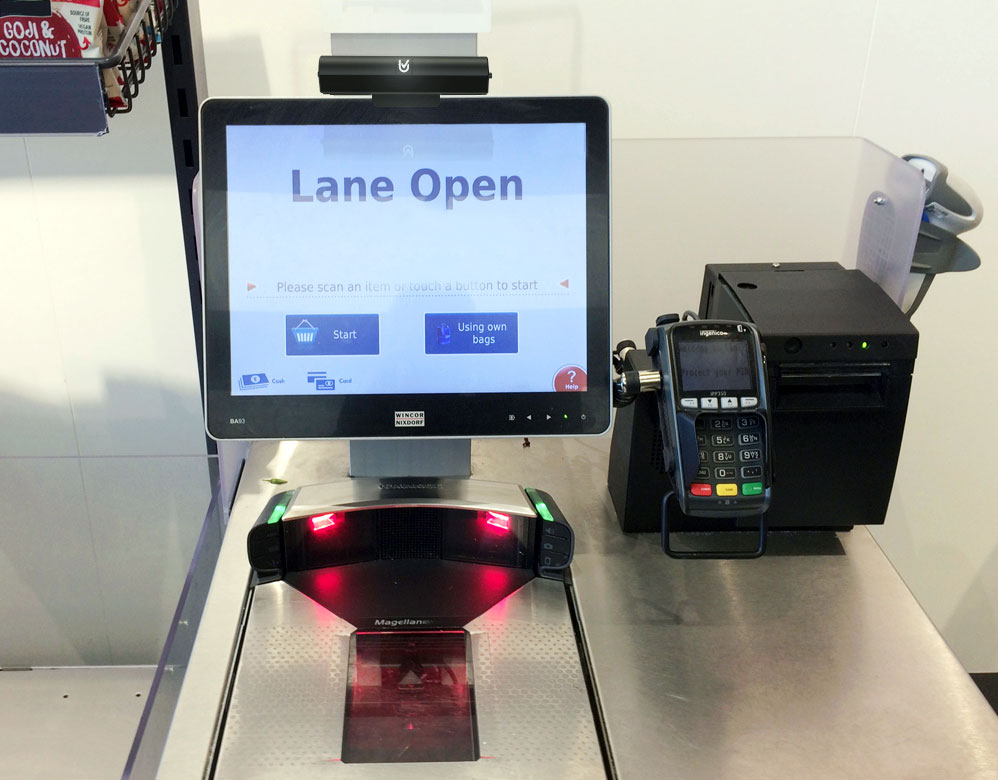
These automated systems have revolutionized the retail experience by allowing customers to independently scan and pay for their items. Here’s how they operate:
- Item Scanning:
- When you approach a self-checkout kiosk, you’ll find a scanner or a touchscreen display.
- Begin by scanning the barcodes on your items. The kiosk’s scanner reads the barcode, identifies the product, and adds it to your virtual cart.
- Bagging Area:
- After scanning an item, place it in the designated bagging area.
- Weight sensors in the bagging area ensure that the correct item has been scanned. If the weight doesn’t match the expected weight (based on the scanned item), the system alerts the user.
- Payment Options:
- Self-checkout kiosks accept various payment methods: cash, credit/debit cards, mobile wallets, and sometimes even gift cards.
- Choose your preferred payment method and follow the prompts on the screen.
- Security Measures:
- To prevent theft, self-checkout systems employ several security features:
- Random Audits: Some kiosks randomly prompt users to rescan items or verify their purchases.
- Surveillance Cameras: Cameras monitor the area to deter theft.
- Weight Checks: As mentioned earlier, weight sensors ensure that items match their scanned weight.
- To prevent theft, self-checkout systems employ several security features:
- Receipt and Exit:
- Once payment is complete, the kiosk prints a receipt.
- Collect your receipt and any change due.
- You’re now free to exit the store without waiting in a traditional cashier line.
Challenges and Considerations
- User Experience: Self-checkout interfaces should be intuitive and user-friendly to minimize frustration.
- Barcode Scanning Accuracy: Ensuring accurate barcode scans is crucial.
- Security: Balancing theft prevention with a smooth customer experience.
- Maintenance: Regular maintenance and software updates are necessary to keep the kiosks functioning optimally.
In summary, self-checkout kiosks empower customers, reduce wait times, and streamline transactions. However, their success depends on a delicate balance between convenience and security.
Self Checkout Kiosk Vs. Traditional Cashiers?
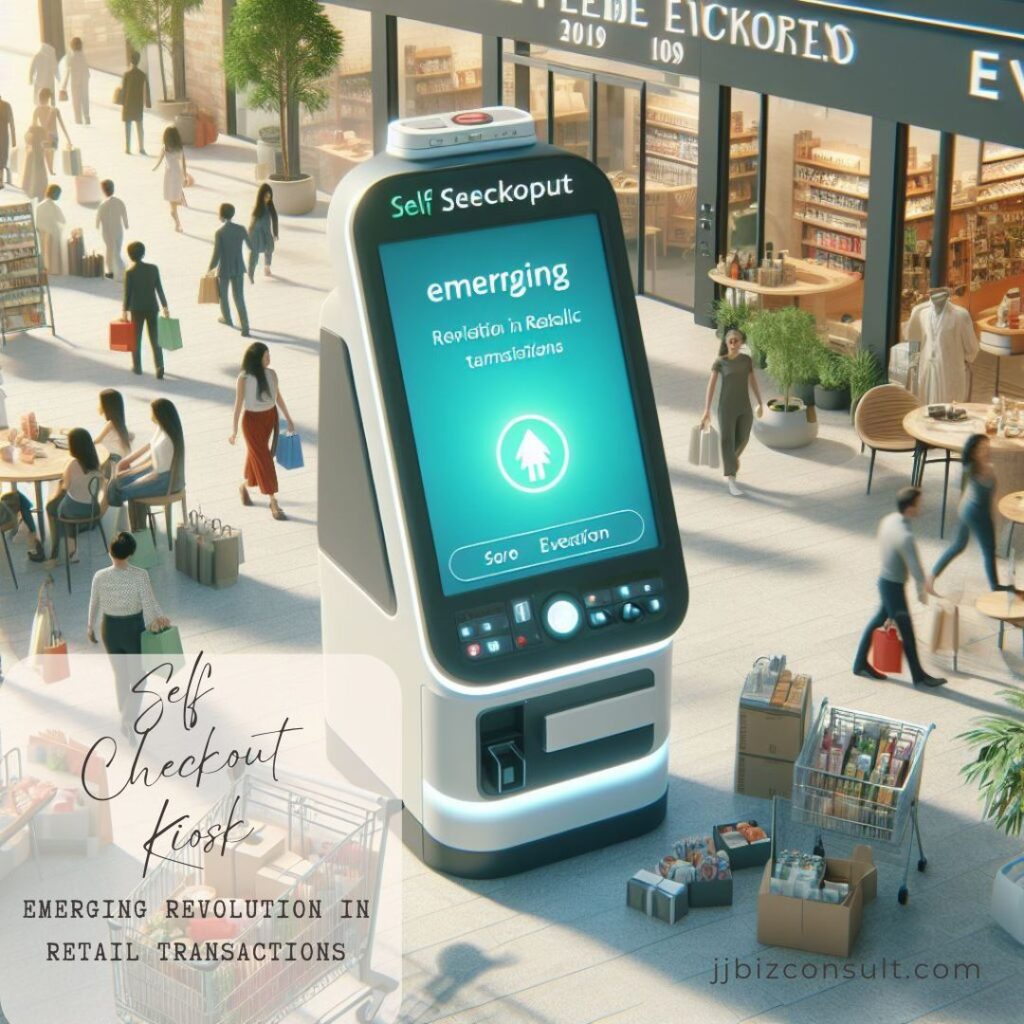
Self-checkout kiosks have become increasingly popular in retail environments, promising efficiency and convenience. Let’s compare their efficiency with traditional cashiers:
- Speed and Wait Times:
- Self-Checkout Kiosks: These automated systems allow customers to scan and pay for items independently. For small purchases, they can be significantly faster than waiting in a cashier line.
- Traditional Cashiers: Cashiers handle multiple customers simultaneously, but wait times can vary based on the number of people ahead of you.
- Transaction Accuracy:
- Self-Checkout Kiosks: When used correctly, self-checkout kiosks ensure accurate scanning and pricing. However, user errors (such as missed scans) can occur.
- Traditional Cashiers: Experienced cashiers are generally accurate, but occasional mistakes can happen.
- Human Interaction:
- Self-Checkout Kiosks: Minimal human interaction—ideal for those who prefer privacy or dislike small talk.
- Traditional Cashiers: Cashiers provide a personal touch, engage in conversation, and can assist with questions or issues.
- Complex Transactions:
- Self-Checkout Kiosks: Best suited for straightforward transactions with a limited number of items. Handling produce or non-barcoded items can be challenging.
- Traditional Cashiers: Cashiers handle various scenarios, including coupons, discounts, and manual entry of non-barcoded items.
- Security and Theft Prevention:
- Self-Checkout Kiosks: Require surveillance cameras and random audits to prevent theft. Some users may exploit vulnerabilities.
- Traditional Cashiers: Cashiers monitor items closely, reducing the risk of theft.
- Labor Costs:
- Self-Checkout Kiosks: Reduce the need for cashier staff, potentially saving labor costs.
- Traditional Cashiers: Require more staff, leading to higher labor expenses.
- User Experience:
- Self-Checkout Kiosks: A smooth experience depends on user familiarity with the system. First-time users may find it confusing.
- Traditional Cashiers: Consistent service quality, but interactions vary based on the cashier’s demeanor.
Conclusion: Self Checkout Kiosk Vs. Traditional Cashiers?
In summary, self-checkout kiosks excel in speed for small transactions and reduce labor costs. However, they may not handle complex scenarios as effectively as traditional cashiers. The choice between the two depends on the retailer’s goals, customer preferences, and the balance between efficiency and personalized service.
Benefit to Retailers from self-checkout technology?
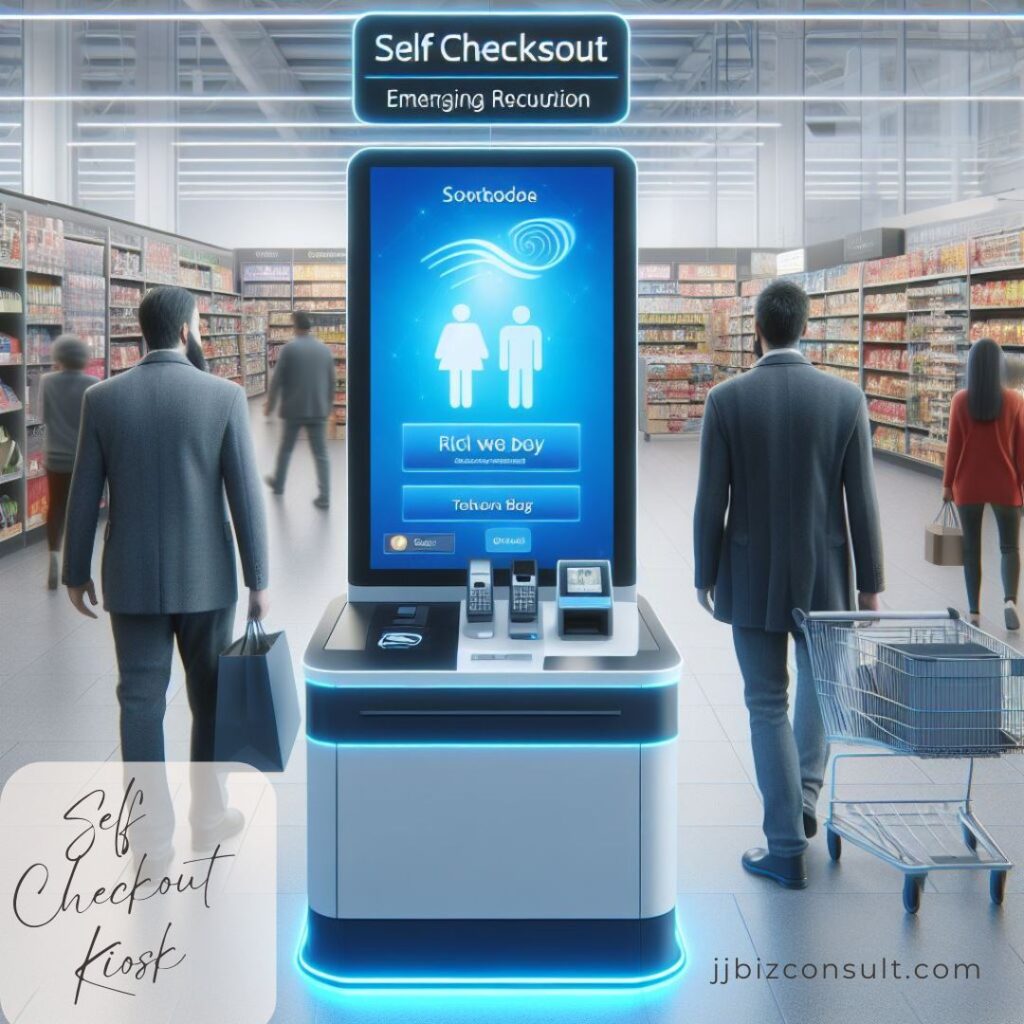
Self-checkout technology has transformed the retail landscape, offering several benefits to both retailers and customers. Let’s explore how retailers gain from implementing self-checkout systems:
- Reduced Staffing Costs:
- Self-checkout kiosks require minimal staff involvement. One staff member can oversee multiple kiosks simultaneously, reducing the need for dedicated cashiers.
- This streamlined staffing approach leads to cost savings in payroll expenses.
- Enhanced Efficiency:
- Self-checkout accelerates the transaction process. Customers scan items, bag them, and pay swiftly, minimizing wait times.
- Retailers benefit from faster throughput, especially during peak hours.
- Optimized Space Utilization:
- Traditional checkout lanes occupy significant floor space. Self-checkout kiosks are compact and can be strategically placed within the store.
- Retailers can reallocate space for other purposes, such as additional merchandise displays or customer seating areas.
- Improved Customer Experience:
- Self-checkout provides a sense of control to customers. They appreciate the convenience and autonomy.
- A positive experience encourages repeat visits and customer loyalty.
- Upselling Opportunities:
- Mobile self-checkout apps allow retailers to offer additional features. For instance:
- Product Reviews: Integrating reviews into the app informs customers about product quality and influences purchasing decisions.
- Upselling and Cross-Selling: Scanning apps enable upselling by suggesting related products or complementary items.
- Personalized Recommendations: Retailers can tailor recommendations based on scanned items.
- These features enhance revenue and create a more engaging shopping experience.
- Mobile self-checkout apps allow retailers to offer additional features. For instance:
- 24/7 Availability:
- Self-checkout kiosks operate round the clock, accommodating late-night shoppers and early risers.
- Retailers extend their business hours, catering to diverse customer schedules.
- Frictionless Sales Process:
- Self-checkout eliminates the need for lengthy interactions with cashiers.
- Customers appreciate the seamless process, leading to higher satisfaction.
- Higher Profit Margins:
- Handheld self-checkout solutions can increase total store revenue by up to 10%.
- Retailers can maximize sales potential by leveraging mobile self-checkout features.
In summary, self-checkout technology empowers retailers to operate efficiently, enhance customer experiences, and adapt to changing consumer preferences. It’s a win-win for both sides!
Conclusion: Self Checkout Kiosk
Self-checkout kiosks are neither friend nor foe—they’re a necessary evolution. As retailers navigate this landscape, optimizing the customer experience remains paramount. Whether it’s Dollar General’s caution or Ross Stores’ experimentation, the future lies in striking the right balance. So, next time you encounter a self-checkout kiosk, remember: it’s not just a machine; it’s a glimpse into the retail revolution.
Remember, self-checkout kiosks are more than mere machines; they represent a shift in how we interact with retail spaces. As technology advances, so does our shopping experience. Let’s embrace the change and explore the possibilities of a self-checkout-driven future! 🛒🤖
E-Retailer: The world of retail is undergoing a seismic shift





